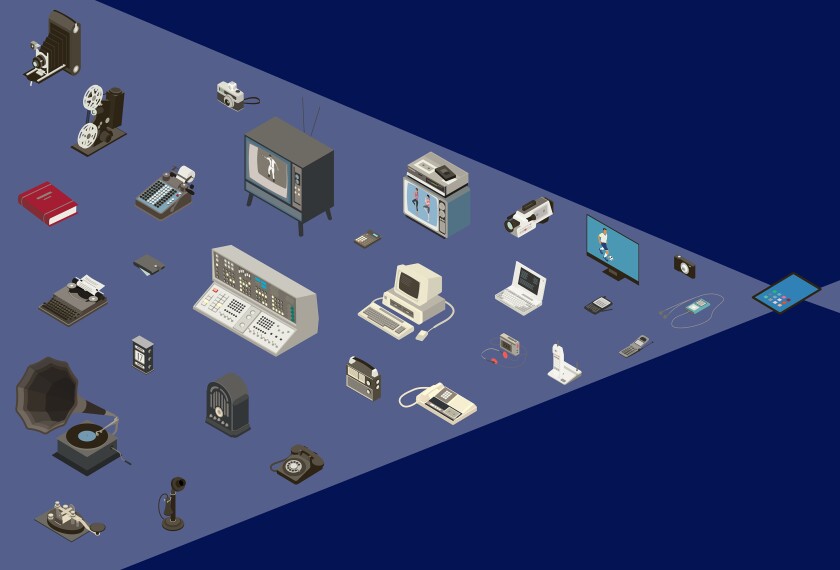We hear a lot about how social media is terrible for teenagers’ mental health. A growing number of laws and lawsuits point the finger at social media companies as playing a major role in driving the youth mental health crisis.
Among the many common criticisms: Social media invites unhealthy comparisons with peers that leave users feeling inadequate and dissatisfied with their lives. The platforms are addictive and teens use them at the expense of personal relationships, schoolwork, and sleep. Social media bombards impressionable minds with false and disturbing information. And, finally, critics say it provides another avenue for bullies to terrorize their victims.
But those issues make up only one side of the coin, said Chelsea Olson, who works at the University of Wisconsin as a researcher in the pediatrics department and is a member of the university’s Social Media and Adolescent Health Research Team.
“There’s both benefits and risks of social media,” Olson said, as there are for most activities teens engage in.
To learn more about how social media can benefit teens’ wellbeing—especially for certain groups of kids—Education Week spoke with Olson by phone. This conversation has been edited for length and clarity.
What do you see as some of the biggest benefits to teens and adolescents using social media?

Two that I often mention are social connection and social support. [Social media] allows youth to connect with people near and far, create friendships, maintain those friendships, stay in touch with family who live far away. And then they can also participate in larger networks based on interests, such as fandoms.
And then social media offers a venue for social support: Seeking social support and receiving that on social media has been found to alleviate depressive symptoms and, and help teens feel better about themselves. Facebook has support groups; often there’s anonymous groups through Reddit, et cetera.
Then another one is that social media just offers so many learning opportunities and information-seeking opportunities. Teens can seek information about their own relationships, like [with] peers or families. They can seek health information, information about their identity, information for school. It’s a really cool venue to seek information.
Other benefits that we [researchers] talk about:
- Creative expression. Teens can express themselves creatively through posts and photos, sharing art, music, et cetera.
- Civic engagement. It allows teens to be involved in civic duties and practice those civic duties online and be involved in advocacy and activism and raising money and encouraging or getting involved in the political process.
- And then, identity development. Allowing teens to engage in identity tasks that they’re already going through. Because in adolescence they’re developing a coherent sense of identity that’s separate from others and their parents. They can use social media to work on those tasks so they can showcase or explore parts of themselves and get feedback from others. I don’t know if safe is the right word that I’m looking for, but like a safer space to express oneself and get some feedback.
In some contexts, it could be a safer space. Talk to me about LGBTQ youth, because I think that’s probably a really good example of this.
So obviously LGBTQI+ youth face a number of challenges like stigma, discrimination. They are at a higher risk for experiencing bullying. They also might experience safety issues or hostile environments at home, in the school. And because of all of those things, they report higher mental health distress. And so social media is a way that they can find community, they can connect with others, they can learn about themselves, they can seek resources online. Social media can actually be like a lifeline for these youth, especially if they’re experiencing those negative things in person.
It could also be youth with chronic illnesses, especially illnesses that are rare or complicated. They might be able to go find others who are experiencing the same thing, getting that peer connection or peer support on social media, joining support groups, accessing information about their illness that they may not be able to find elsewhere.
Another one is youth who are socially anxious about interacting in person can use social media and the internet to practice those skills.
A counter argument you’d hear to that is: “Well, they need to get offline and get over it and build those skills in the real world.” How would you respond to somebody who says that?
Research has found that adolescents who aren’t socially anxious, who have really rich social communities offline, tend to take those communities online where they augment their offline communities. It’s kind of like the rich get richer, where they’re already succeeding offline and they take those interactions online and only strengthen them.
Research has also shown that socially anxious kids, ones that are struggling offline, can go online and practice those skills and then hopefully take them offline as well.
What do educators need to be doing to help kids reap these benefits of social media while avoiding the risks?
Modeling [positive social media use] is really important.
A really cool . They have specifically for educators a curriculum that’s free to use and research-backed.
Another resource is the . Families can develop plans with teens and set those boundaries. Involving youth and their thoughts and perspectives and ideas is really important because if we involve youth, they’re more likely to follow those boundaries or goals.
I think media literacy, digital citizenship skills would be really important to add to curriculum in schools, just because social media is here to stay. Teaching those things early and ensuring that teens have those tools and skills would be essential to ensuring that they’re using technology positively in the future.






